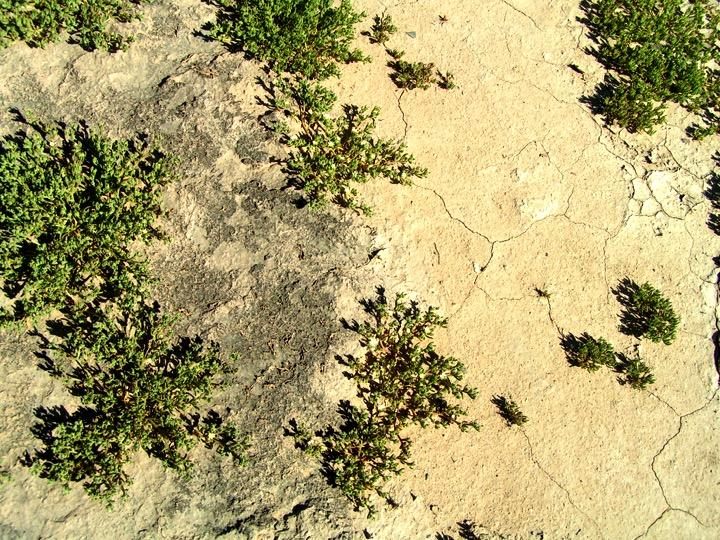FOUND: Desert Hot Spots Just for Microbes

The dark spot is extra hot (Photo: Ferran Garcia-Pichel, Arizona State University)
Out in the desert, in addition to hermits, Mars simulations and one lonely mailbox, there are whole communities of microbes staking a claim.
It begins when soil-stabilizing cyanobacteria pioneer a spot in the desert and are followed later by less adventurous microbes which colonize the desert surface. Eventually, a spot will have so many microbes living in it that their community will become a dark spot on the desert sand.
When a large surface area gets darker, it absorbs more heat, and once these desert microbe communities are large enough, they actually increase the temperature of the area in which they live. In a new study, published in Nature Communications, scientists working in Arizona and California found that these spots can raise local temperatures as much as 18 °Fahrenheit.
Part of the reason microbes darken the surface of the desert is that they create compounds to protect themselves from the UV rays of the sun–they create microbial sunscreen. In the communities the researchers studied, that compound was scytonemin. And since these microbial hot spots are estimated to cover 20 percent of Earth’s continental land surface, that adds up to a lot of sunscreen, an estimated 15 million metric tons.
The upshot here is that microbes, though tiny individually, together can have a huge impact on the planet’s climate. Microbes bring the heat.
Bonus finds: A “bleeding” tree, a 22-million digit prime number
Every day, we highlight one newly lost or found object, curiosity or wonder. Discover something unusual or amazing? Tell us about it! Send your finds to sarah.laskow@atlasobscura.com.











Follow us on Twitter to get the latest on the world's hidden wonders.
Like us on Facebook to get the latest on the world's hidden wonders.
Follow us on Twitter Like us on Facebook